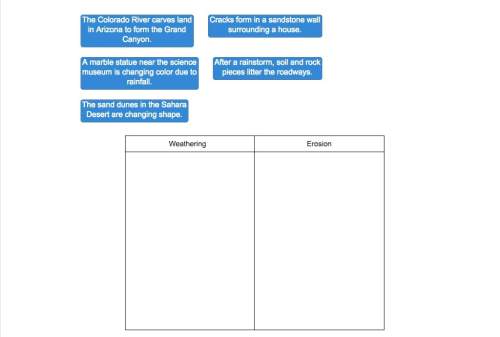
Biology, 22.07.2019 11:00 camperangie3364
American scientist melvin calvin's research contributed to the understanding of the process of photosynthesis. to which portion of the process does his work most directly apply? responses a. the process of sugar production that occurs in the stroma b. the movement of light through the membrane and into the thylakoid c. the production and release of o2 during the light-dependent reaction d. the movement of h2o into the thylakoid to be used as a raw material for photosynthesis

Answers: 1
Another question on Biology

Biology, 21.06.2019 14:30
Acladogram is a branching diagram that represents suggested evolutionary relationships among organisms based on the presence of unique traits. a scientist discovers a new organism that lacks limbs and does not have a true backbone. the organism lays eggs to produce offspring and has a cartilage-like rod known as a notochord running along its dorsal surface. on the cladogram below, select the species to which the newly discovered organism is most closely related.
Answers: 1

Biology, 22.06.2019 01:30
Scenario 5 1) take 10 red and 10 black beans and place them, mixed, on the table. record the starting phenotype # and frequencies (% of your total population) of your starting population in the table provided (generation 0). 2) act as a predator. “capture” as many organisms as you can until you have reduced the population to three organisms. put them aside. at this point, the predators die. 3) the remaining organisms each produce 2 clonal offspring. multiply your organisms accordingly and allow them to mix on the table. calculate and record the resultant phenotype # and frequencies (% of your total population) of your population in the table provided (generation 1). 4) repeat the reproduction event, allowing each of your organisms to produce 2 clonal offspring. calculate and record the resultant phenotype # and frequencies (% of your total population) of your population in the table provided (generation 2). 5) repeat the reproduction event, allowing each of your organisms to produce 2 clonal offspring. calculate and record the resultant phenotype # and frequencies (% of your total population) of your population in the table provided (generation 3).
Answers: 1

Biology, 22.06.2019 06:30
Mitosis creates two identical daughter cells from one parent cell creates four nonidentical daughter cells from one parent cell is the most common type of reproduction for bacteria is the process by which male and female reproductive cells are created
Answers: 1

You know the right answer?
American scientist melvin calvin's research contributed to the understanding of the process of photo...
Questions


English, 12.04.2021 19:00




Mathematics, 12.04.2021 19:00


Mathematics, 12.04.2021 19:00


Mathematics, 12.04.2021 19:00


History, 12.04.2021 19:00

Mathematics, 12.04.2021 19:00


Mathematics, 12.04.2021 19:00




Mathematics, 12.04.2021 19:00

Mathematics, 12.04.2021 19:00




